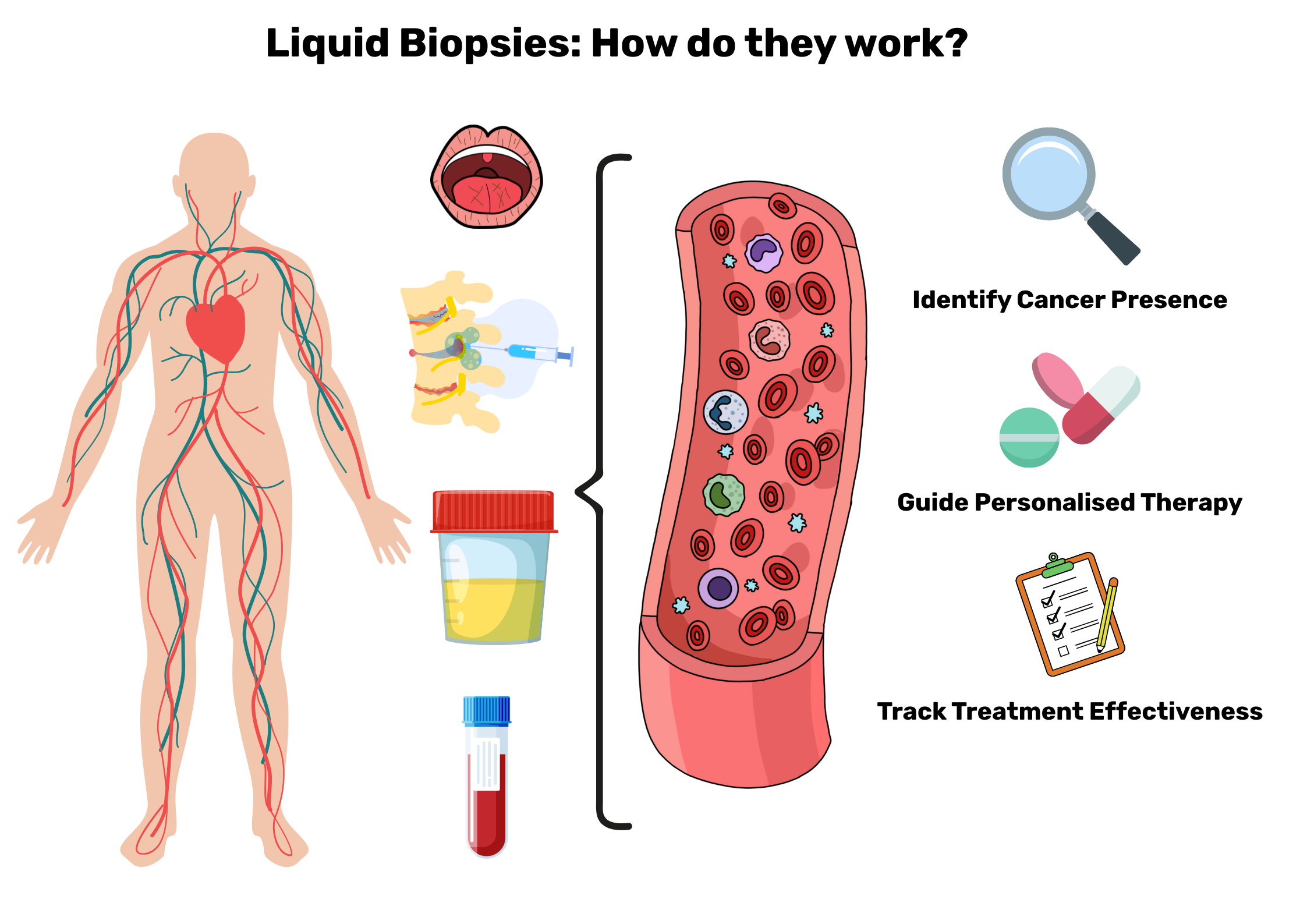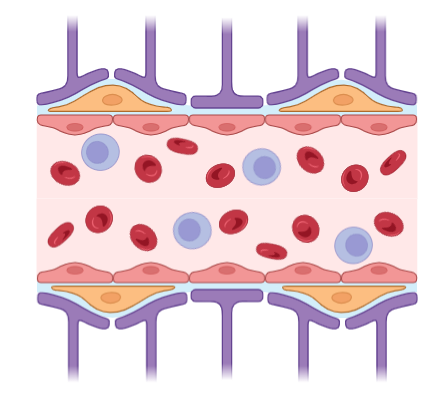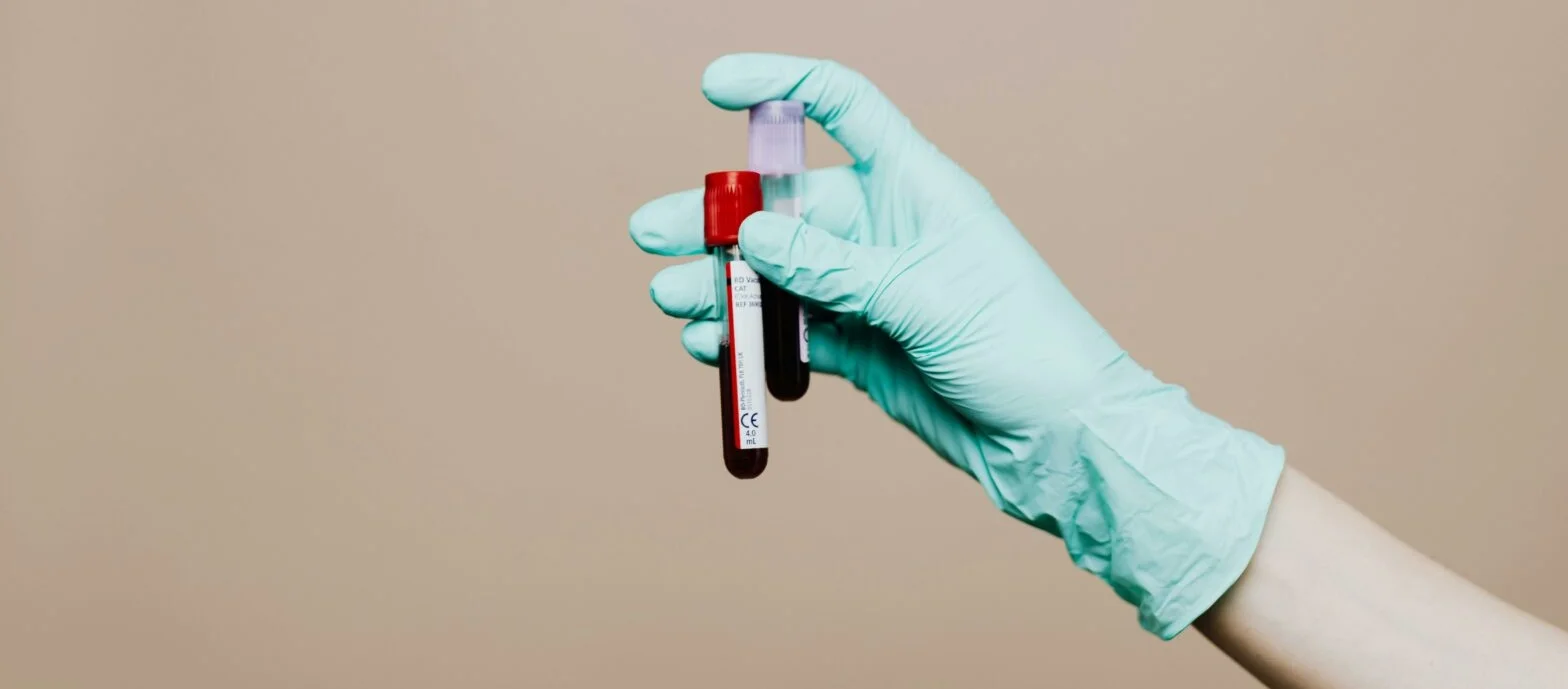Liquid biopsies are tests that look for traces of tumour DNA or other markers in the blood and other fluids. It’s hoped they could offer an alternative way to diagnose cancer. But while the idea of a simple blood test replacing a brain scan or biopsy sounds appealing, the reality for brain tumours is still more complex. This blog post explores what liquid biopsies are, how they work, what current challenges they face and what the future holds.
What are liquid biopsies and how do they work?
Unlike traditional biopsies, which can involve surgery, a liquid biopsy is much less invasive. Instead of removing a piece of tissue, doctors can take a sample of blood or Cerebrospinal Fluid (CSF) to look for signs of cancer.
This is possible because, as a tumour grows, it releases fragments into the bloodstream. Doctors can use these fragments, known as tumour markers, to help detect cancer. These “tumour markers” are a type of biomarker.
Biomarkers are measurable signals, such as bits of DNA, proteins or cells, that provide clues about what’s happening in the body, including signs of disease. Measuring the levels of these tumour markers can also help to track the progression of a tumour.
The main things liquid biopsies measure are:
- Circulating tumour DNA (ctDNA): Small pieces of DNA shed by tumour cells that circulate in the blood
- Circulating tumour cells (CTCs): Cancer cells from the tumour circulating in the blood.
- RNA and proteins: Molecules providing clues into tumour activity
Measuring these elements can give doctors an insight into the progress of a tumour and help to make appropriate treatment decisions. In some cases, liquid biopsies may also help give an indication of prognosis and allow doctors to identify potential weaknesses in the tumour to target treatments. This could lead to faster diagnosis and more tailored care.
This approach could help to improve speed and ease of diagnosis, as well as helping monitor how effective somebody’s treatment is.

What challenges are associated with liquid biopsies?
Despite their promise, liquid biopsies face a major challenge presented by the blood brain barrier (BBB). This protective layer surrounds the brain and makes it difficult for substances to pass through. While this helps to keep the brain safe, it can also make it difficult to get treatments into the brain. It also prevents a lot of tumour fragments (ctDNA) from exiting the brain, making it harder to detect through a standard blood based liquid biopsy.
However, cerebrospinal fluid (CSF) analysis could offer a promising alternative. CSF surrounds both tumours and the brain, offering a higher concentration of biomarkers compared to blood. It also contains more brain-specific biomarkers, whereas blood plasma contains markers from all over the body. Unfortunately, the procedure to collect CSF is more invasive than a blood test and is still being refined for widespread use.
Currently, liquid biopsies are not reliable enough to diagnose brain tumours independently. Instead, they are currently being trialled in combination with other traditional imaging and biopsies to improve diagnostic results.

How we’re helping to drive change
With further investment and research, liquid biopsies could transform how brain tumours are diagnosed. They could potentially offer a faster, less invasive and more accessible way to diagnose complex tumour types.
Examples of ongoing innovative research into liquid biopsies include Petra Hamerlik, who has contributed great efforts towards the use of liquid biopsies to identify tumour fragments. Her dedication led to a multi-centre biomarker study carried out across five sites in the UK. As part of the Cancer Tech Accelerator (CTA) program, researchers Dr. Henno Martin and Dr. Radek Lach have also been funded £70,000 to develop liquid biopsy technology, in the hopes of bringing liquid biopsies closer to widespread diagnostic usage.
Also, our very own Policy and Campaign Team have seen first-hand the innovative research going on in Dxcover last year. Dxcover is a clinical stage liquid biopsy company based in Scotland, developing a blood test for early cancer detection. Using AI, in its first clinical trial, it was able to identify not only 90% of glioblastomas, but 80% of all other brain tumour types too. This shows promising potential for brain tumour detection to become easier in the future, improving both survival and quality of life.
Research is just one other way your regular gift can make a difference
Research is the only way we will discover kinder, more effective treatments and, ultimately, stamp out brain tumours – for good! However, brain tumours are complex and research in to them takes a great deal of time and money.
Across the UK, over 100,000 families are facing the overwhelming diagnosis of a brain tumour and it is only through the generosity of people like you can we continue to help them.
But, by setting up a regular gift – as little as £2 per month – you can ensure that families no longer face this destructive disease.
